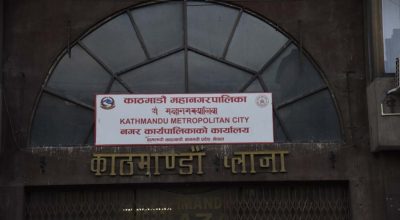
Kathmandu: Media can play proactive role in educating the general public and alerting the authorities about disaster preparedness beside reporting after the crisis – media personnels representing most of the prominent media houses in Kathmandu agreed today at an interaction programme organized by the International Organization for Migration (IOM).
Supported by USAID’s Office of U.S. Foreign Disaster Assistance (OFDA), and organized in coordiation with Federation of Nepalese Journalists (FNJ), the programme aimed to discuss on how media can specifically contribute in building disaster-resilient society through advocacy, awareness and creating pressure to ensure accountability on DRM governance at all levels of government.
IOM, in partnership with the Government, Civil Society, Humanitarian Actors and communities, has been continually advocating for resilient communities through media advocacy.
The media advocacy campaign through Television programme ‘Talk of the Town’ programme, that has aired total of 52 episodes on DRRM issues to date, has created a nation-wide forum and a platform in bringing stakeholders from different fields together to achieve a common goal of building a disaster-resilient nation. DRRM issue is a national priority as parliamentarians and Government have been constantly raising voice for it.
Around 30 journalists from FNJ district chapters- Kathmandu, Lalitpur and Bhaktapur, and Chairperson from Association of Community Radio Broadcasters Nepal (ACORAB) and senior journalist of News Agency Nepal (NAN) were among the participants while Senior DRM Expert/ Former Minister for Education Dr. Gangalal Tuladhar facilitated the interaction.
Nepal is among the 20 most disaster-prone countries in the world. In 2015 earthquakes displaced approximately 2.8 million people. Some 117,700 people in the 14 worst-affected districts were forced to find shelter in makeshift camps. 2017 also saw heavy rains resulting in flooding across 35 of Nepal’s 77 districts. Over 190,000 houses were destroyed or partially damaged, displacing tens of thousands of people and leaving many homeless.
Nepal’s new federal structure will see a massive shift of power from federal to provincial and municipal levels of government. DRRM is among 22 areas of government that are now the responsibility of devolved authorities.
The government is currently updating roles, structure, and responsibilities of its disaster management agencies based on the new DRRM Act 2017. This will include significant decentralization for decision making, resources management and service delivery systems.













